Primary Source Set
Analyzing Political Cartoons
One of the ways that newspaper publishers express their views is through political cartoons. This editorial form became popular over the 20th century for the way it can quickly and forcefully deliver a viewpoint to its audience—particularly in decades when not all adults could read. This primary source set uses examples of political cartoons from school and community newspapers to show how the form has evolved over the last 100 years.
Proceed with caution and care through these materials as the content may be disturbing or difficult to review. Please read DigitalNC’s Harmful Content statement for further guidance.
Time Period
20th Century
Grade Level
9 – 12
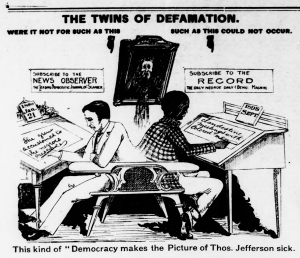
The Caucasian (Clinton, N.C.), October 20, 1898

The Morning Post (Raleigh, N.C.), Jan. 14, 1900
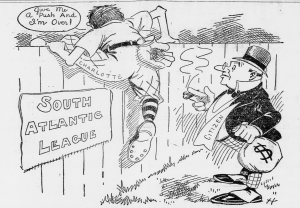
The Charlotte News (Charlotte, N.C.), December 7, 1906
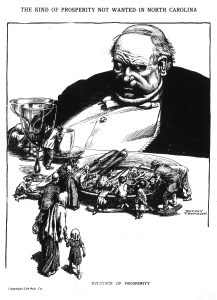
The State Journal (Raleigh, N.C), March 7, 1913
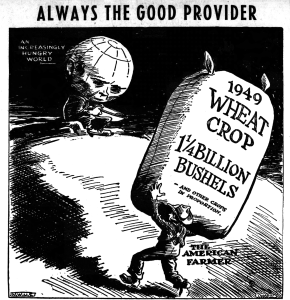
The Elkin Tribune (Elkin, N.C.), July 28, 1949
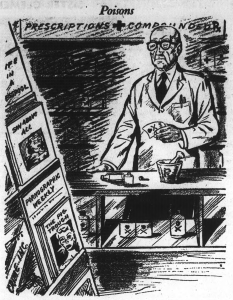
North Carolina Catholic (Nazareth, N.C.), May 22, 1953
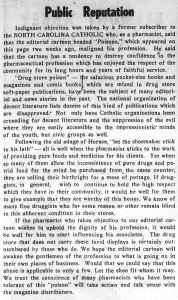
North Carolina Catholic (Nazareth, N.C.), June 5, 1953
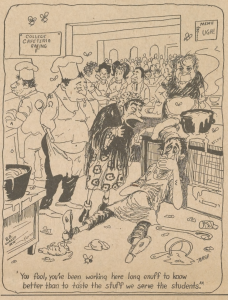
The Campus Echo (Durham, N.C.), April 30, 1962

Watauga Democrat (Boone, N.C.), Jan. 7, 1965

The Front Page (Raleigh, N.C.), Feb. 28, 1980
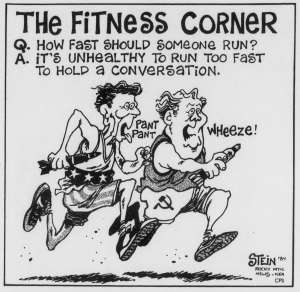
The Guilfordian (Greensboro, N.C.), September 12, 1984
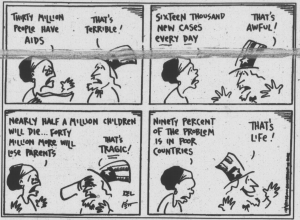
The Winston-Salem Chronicle (Winston-Salem, N.C.), January 1, 1998
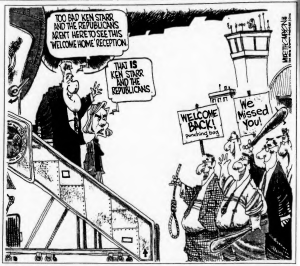
The News-Journal (Raeford, N.C.), July 22, 1998

The Seahawk (Wilmington, N.C.), April 24, 2003

The Daily Tar Heel (Chapel Hill, N.C.), September 15, 2003
Background
Many newspapers in the 20th and 21st centuries include editorial sections designed to make arguments or give opinions about topics in the news. One way for newspaper editors to present an opinion is through political cartoons. While these cartoons can be funny and entertaining, their primary purpose is to quickly make an argument about a political or social issue. Political cartoons can be found in all kinds of newspapers published in many different countries and can be used to address any issue that the audience of the newspaper recognizes. Many times, the artists address polarizing issues with cartoons or push the boundaries in an effort to evoke a reaction from readers.
Political cartoons often use some of the same rhetorical devices as written articles, including irony, symbolism, and analogy. Cartoons also have their own rhetorical devices, such as exaggerating characteristics of a particular person and labeling things to tell you what they represent. Sometimes, the meaning of the cartoon is made clear through a short title or caption. Additionally, understanding political cartoons usually requires knowing their contexts. Many of them contain representations of famous people or references to historical events. It may also help to know the intended audience of the newspaper.
Note: Some political cartoons depict stereotypes that may be uncomfortable to see. While the examples in this set avoid offensive imagery as much as possible, other pages of these newspapers may include it.
Discussion Questions
What do you see in this cartoon? Who are the characters? What are they doing?
What rhetorical devices is this cartoonist using? What elements are exaggerated or humorous?
What is the argument the cartoon is making? How do you know?
What does this cartoon tell you about this newspaper? Who is their primary audience? What viewpoints do they want to convey?
Do you find the cartoon’s point persuasive? Why or why not?
This primary source set was compiled by Sophie Hollis.
Updated January 2025